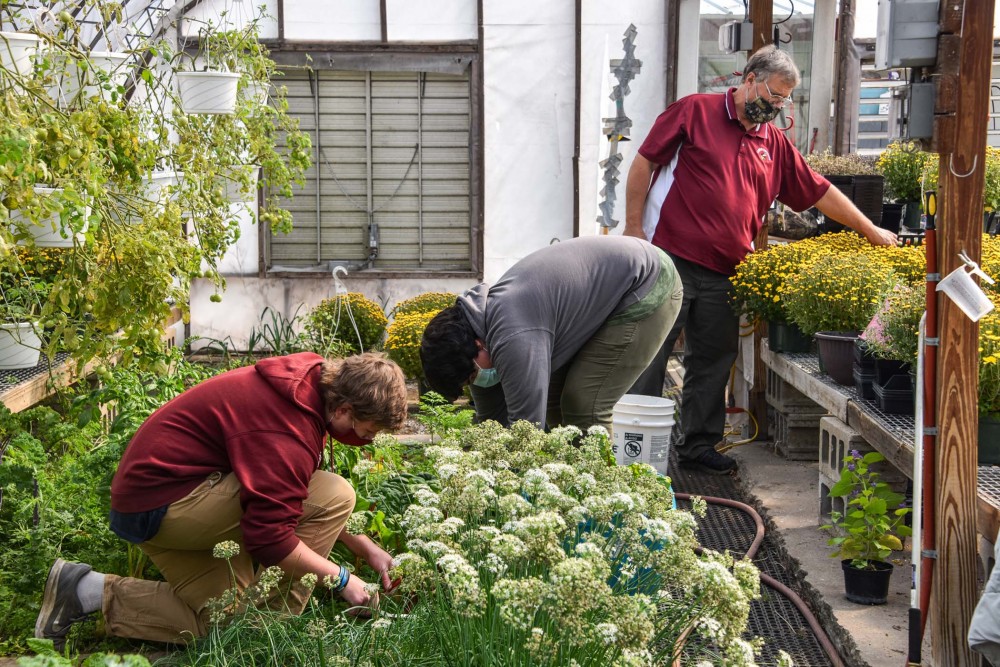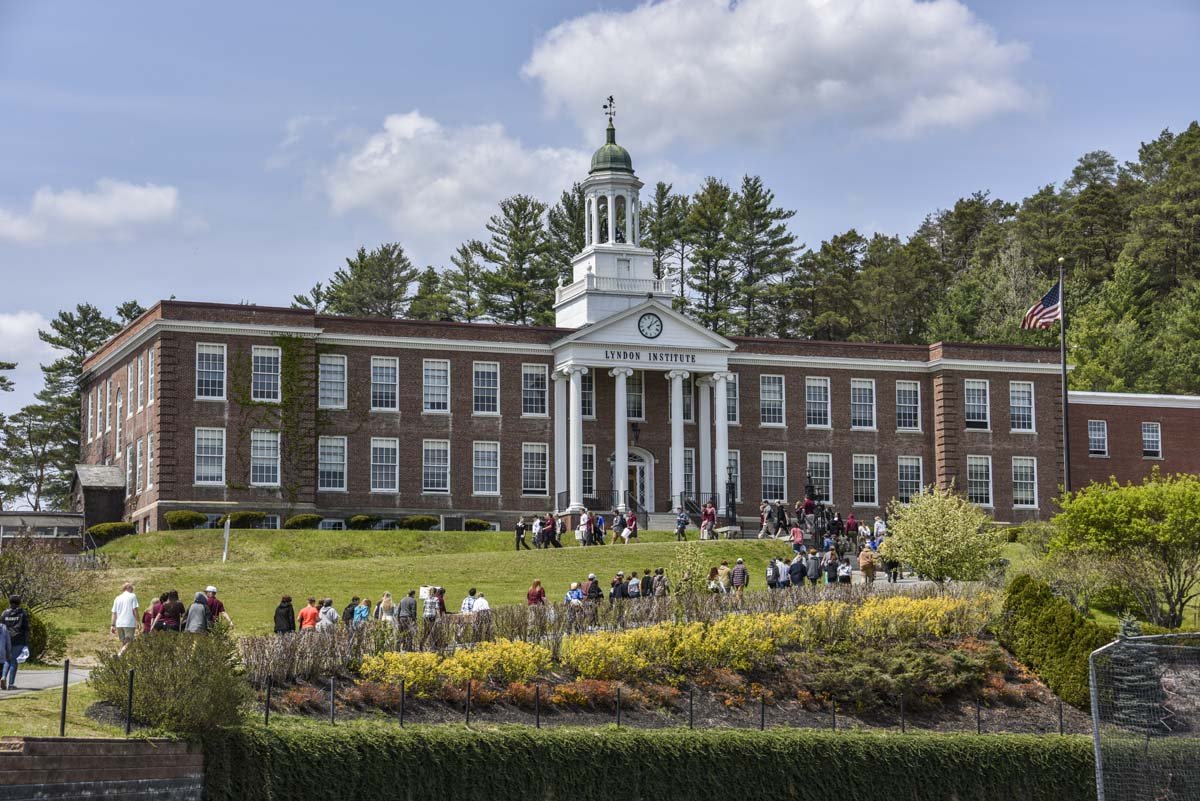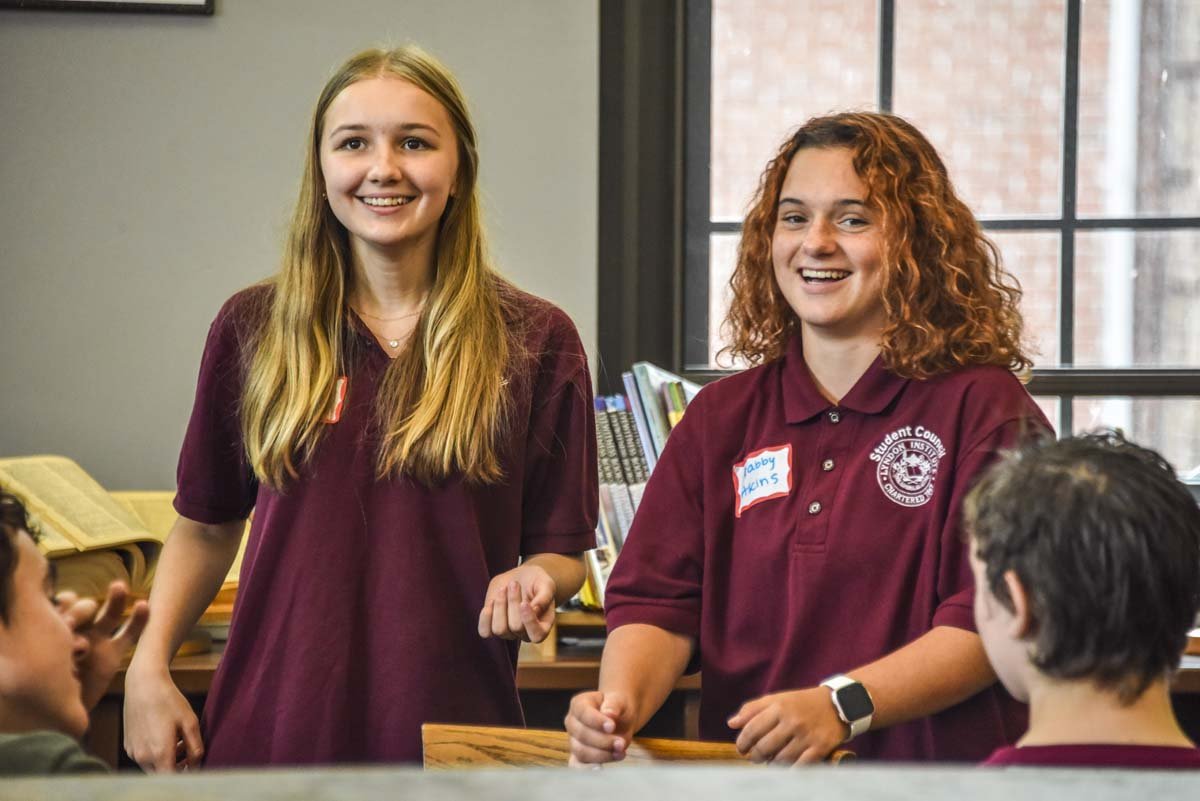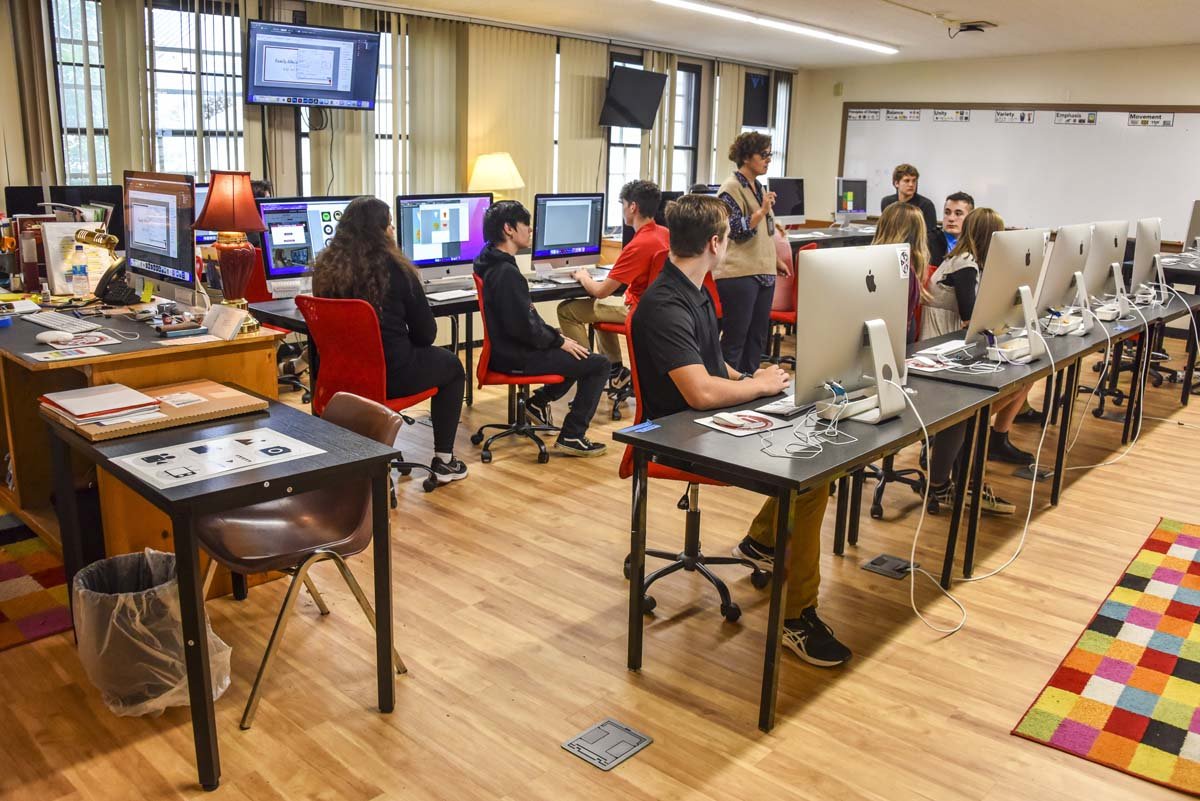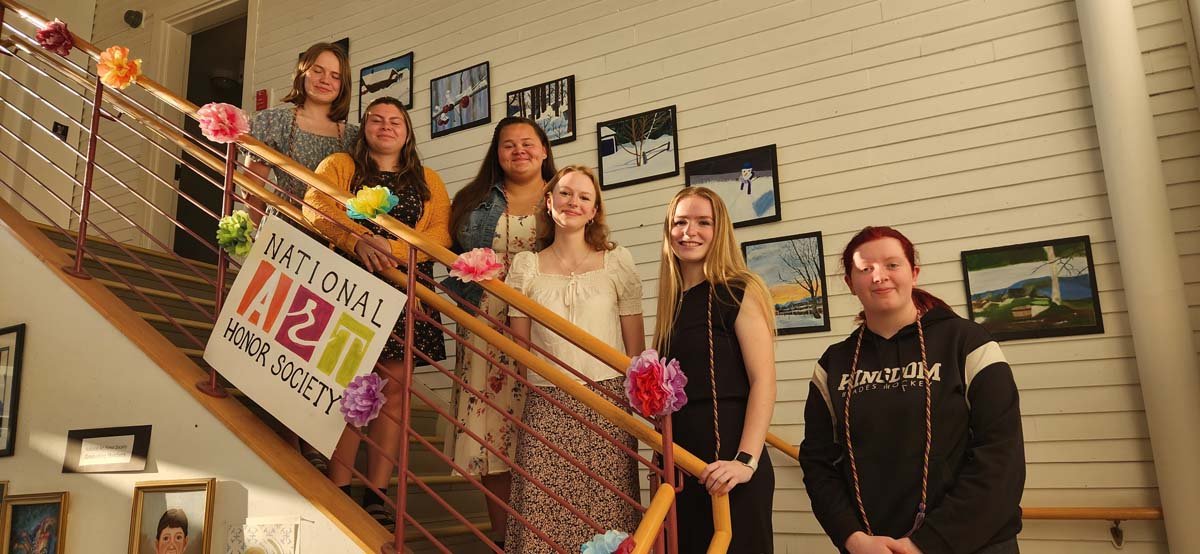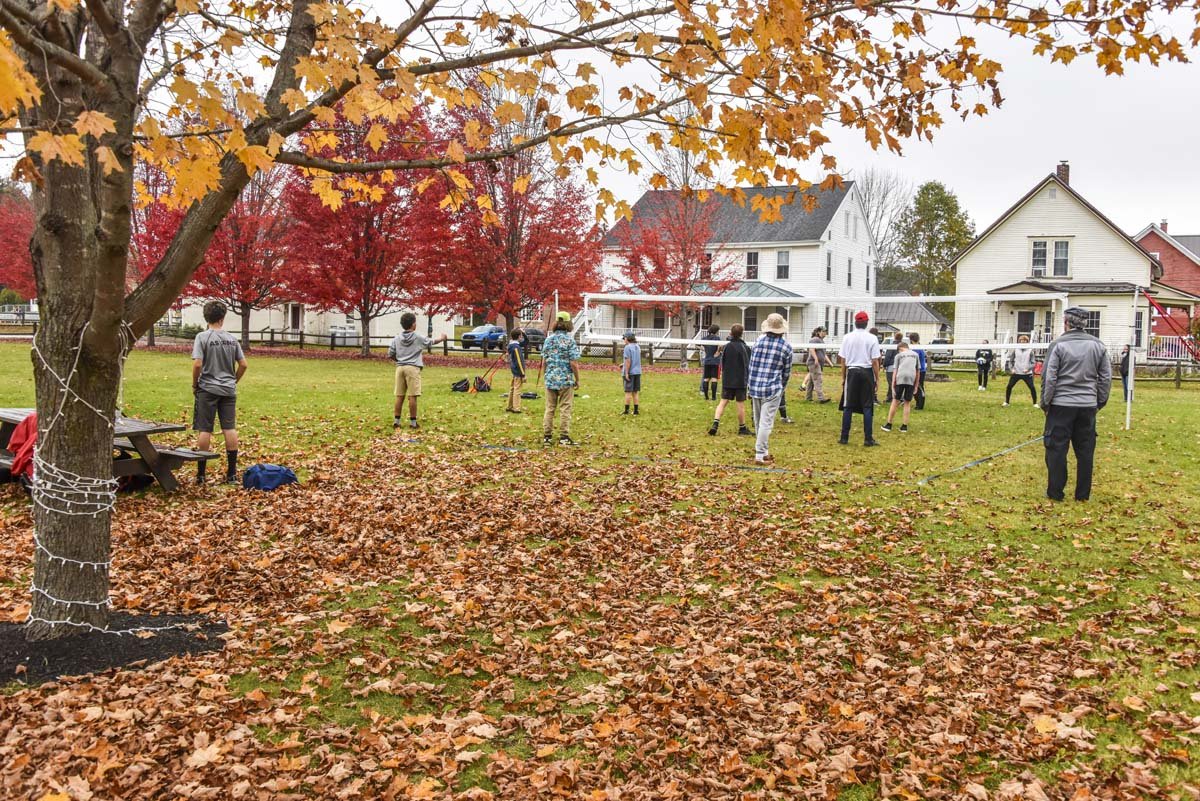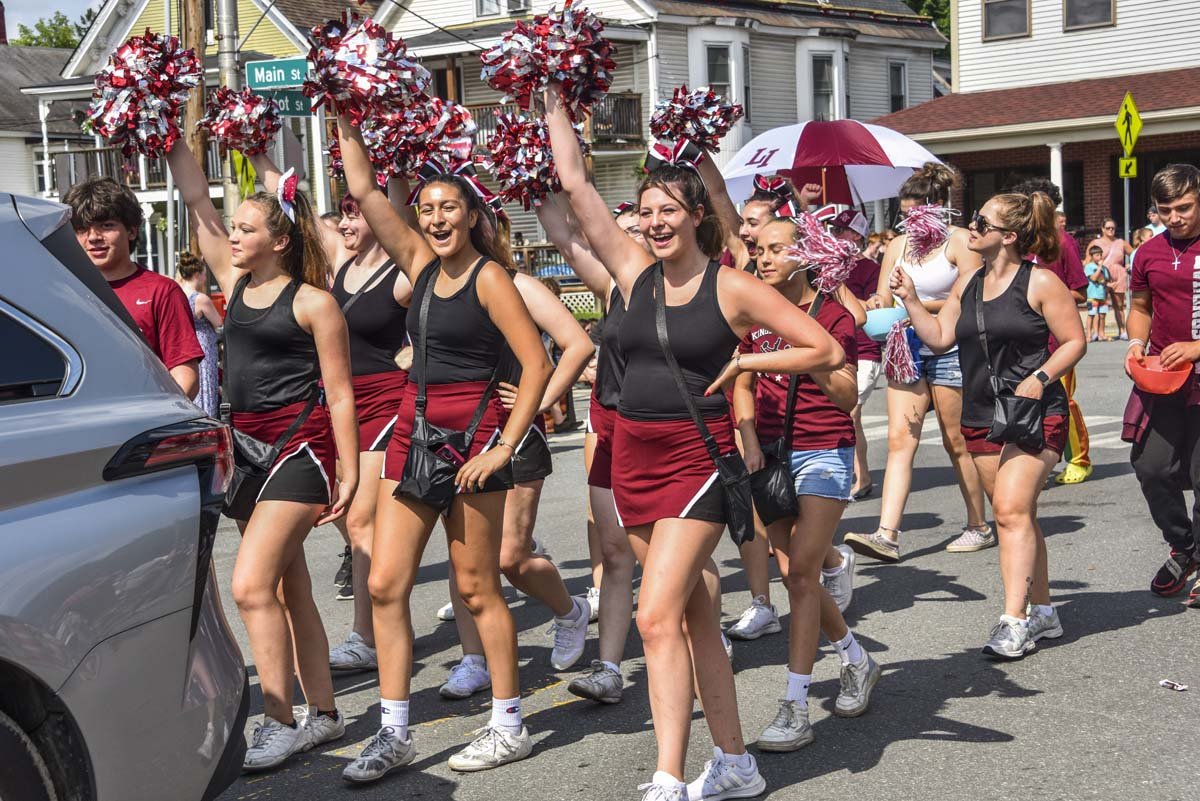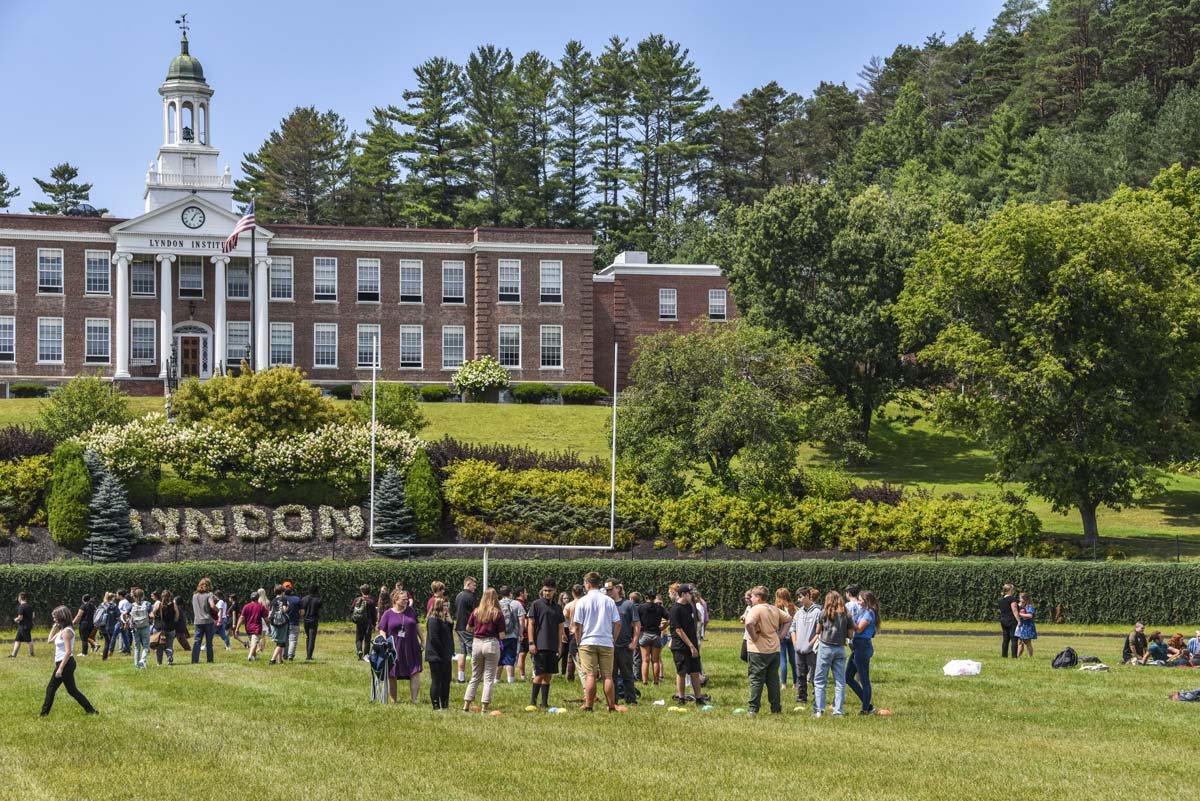- Our School
- Admissions
-
Academics
- Divisions and Faculty
- Commencement 2024
- January Term
- International Program (ESOL)
- College and Career Counseling
- Upward Bound
- Library/Monahan Academic Commons
- Career/Technical Education
- Lyndon Learning Collaborative
- Flexible Lyndon Institute Pathways (FLIP)
- Specialized Instruction
- Adult Continuing Education
- Lyndon Institute Course Catalog
- Student Services
- Arts
- Athletics
- Campus Life
- Support LI
- Alumni
« Back
Growing It Forward
September 23rd, 2020
It’s the first week of school, and though the pandemic has delayed our start by two weeks, it still seems like summer, a sultry September day in the mid-80’s that makes the outdoors feel like a greenhouse. Behind the Buschmann House on lower campus lies Lyndon Institute’s actual greenhouse. From Center Street, the classic curved, transparent structure is unassuming, blending into a backyard filled with solar panels, garden plots, and trees.
Instructor Jerry Leonard brings me inside, and what seemed unassuming before feels much roomier within. Hanging baskets of cucumbers and tomatoes plants—now withered since giving up their harvest—occupy one side, while the other is very much alive with some of the biggest, greenest vegetables I’ve ever seen—leafy Swiss chard with ruby stems, giant prehistoric-looking stalks of kale, lush carrot tops, tall stems of flowering dill.
Jerry bends down and plucks a carrot from the crowded bed, brushing off the soil with a hand long-used to dirt.
“Here you go,” he says. “A good snack for later.”
The message is clear—this bonanza isn’t meant to stay in the ground. It’s meant to go out into the community. It’s meant to feed people. This is the world of Lyndon Institute’s Diversified Ag program.
The program started small in the summer of 2009, when Jerry—a UVM Extension Master Gardener—won a grant from the Vermont Community Garden Network to establish a plot on the LI campus. Still a relatively new arrival to the school hired primarily to teach precision machining at LI, Jerry began offering a course in sustainable gardening.
Like any good garden, from there the program began to grow. More grants led to more beds. In 2011, LI students in the sustainable agriculture program came together to help construct a greenhouse. Solar panels supporting a hydronic heating system extended the growing season, allowing the greenhouse to winter over plants. Soon Jerry had added a botany and horticulture class to the technical course offerings that also gave students an opportunity to earn science credit.
During this period, long-time biology teacher David Williams had created a separate class called Diversified Agriculture. When David retired, Jerry took over the class, which expanded into a three-period long tech-ed program. A few years ago, the program expanded again to encompass an on-campus sugarhouse where students can focus on producing a sweeter kind of harvest in the off-season.
The program introduces students to multiple facets of agriculture—gardening, animal husbandry, forestry—with a focus on business and sustainability. For some students, the program can lead to healthy life-long hobbies, for others it can be a pathway to new careers in logging, farming, retail nursery operation, or landscaping.
Along the way, the program expanded in another important way, opening up to students during the summer months. Each summer, up to a dozen students come two or three days a week for three-hour shifts to work with Jerry in the greenhouse and the gardens around it. Some have struggled academically during the school year and are there for credit recovery. Others just want to learn a new skill. All summer they work in the beds, get their hands dirty. They raise the starters to maturity, watering, fertilizing, and pruning. They learn where their food comes from and how to nurture a living thing. Like the students in the regular Diversified Ag program, they learn what it means to eat healthy and be close to the soil. They take fresh produce home to help feed their families.
They’re not the only ones who benefit from the harvest. Jerry soon discovered that a growing program presented an interesting challenge. Additional garden plots, more beds, and longer growing seasons meant more crops and bigger quantities of vegetables. What to do with all this food?
For a while, during the peak of the school’s boarding population, much of it went straight to the school's cafeteria to feed students at both lunch and dinner, offering healthy options to supplement traditional cafeteria fare. In recent years, much of the bounty has traveled beyond the school’s confines and into the broader community.
I spoke with Cindy Brown, who for twenty years has helped operate the Senior Meal Site at The Darling Inn in Lyndonville, along with the community’s Meals On Wheels program. Throughout much of the summer, her programs are on the receiving end of LI’s harvest.
“It’s been an absolute godsend,” Cindy said, “to be able to offer fresh veggies instead of frozen food. We make all kinds of salads with what LI sends us. We get to serve up lettuce, kale, tomatoes, cukes, squash, and Swiss chard. The produce that these students grow allows us to give our seniors healthier meals.”
Serving around 165 meals most days (sometimes almost 250 meals on Fridays), the program is open to the public. Seniors and those with disabilities can get a full meal either onsite or through takeout with a suggested donation of $4. Meanwhile, with two separate routes, Meals On Wheels takes food out into the community to those who are housebound.
Cindy emphasized how vital the program is to local community members. “For many of our most vulnerable seniors, Meals On Wheels provides them with the only hot meal they get, and in many cases, the only person-to-person contact they’ll have that day.”
The food raised in LI’s gardens goes even further, with the overflow sometimes going to HOPE or the Lyndon Area Food Shelf.
For Jerry, the satisfaction comes not only from helping feed people but also from teaching students how to feed themselves. For him, teaching came naturally. A former manufacturing engineer who spent many years working at the Kennametal plant in Lyndonville, Jerry often found himself training members of the fourteen-person crew he oversaw on the 236 machines he helped maintain. When the plant closed and Jerry, like many in the community who worked there, found himself unemployed, he decided to turn to education to continue sharing his knowledge. Shifting from his engineering background, he was eventually able to take a life-long passion and turn it into a new way to teach.
“I just sort of grew up with it,” he told me. “Our family kind of embraced the whole back-to-the-land homesteading movement and raised most of our own food, both vegetables and meat. We had big gardens and were involved with 4-H.”
Now, Jerry’s gardens aren’t only on the homestead but at Lyndon Institute, and they’re not only his but his students’, as well, who not only learn where their food comes from but also just how much good it can do for others.
 Caption: Lyndon Institute students Collin Wilkie Johnson (left) and Bradley Hulbert (center) harvest swiss chard with instructor Jerry Leonard (right) in the campus greenhouse.
Caption: Lyndon Institute students Collin Wilkie Johnson (left) and Bradley Hulbert (center) harvest swiss chard with instructor Jerry Leonard (right) in the campus greenhouse.
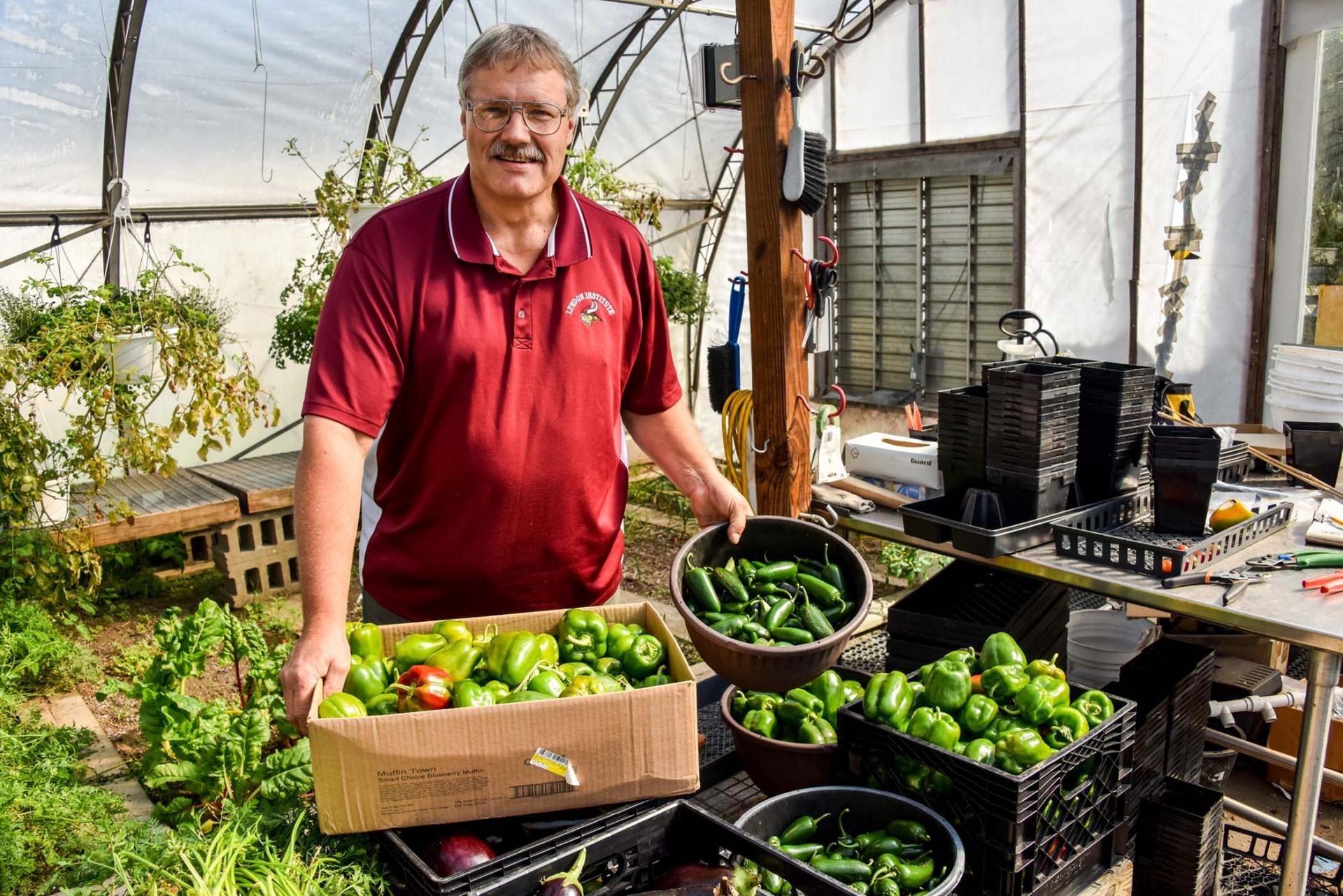 Caption: Instructor Jerry Leonard with a recent harvest from the Lyndon Institute gardens and greenhouse.
Caption: Instructor Jerry Leonard with a recent harvest from the Lyndon Institute gardens and greenhouse.
Posted in the category Front Page.

